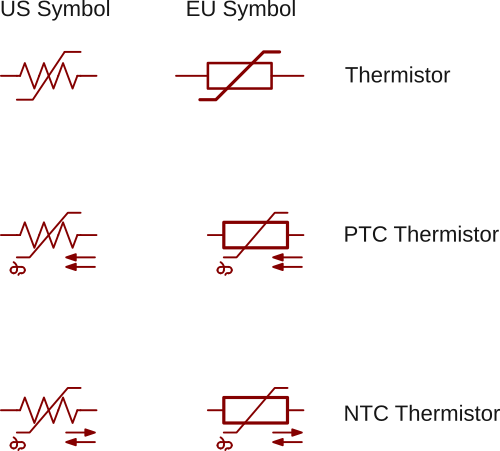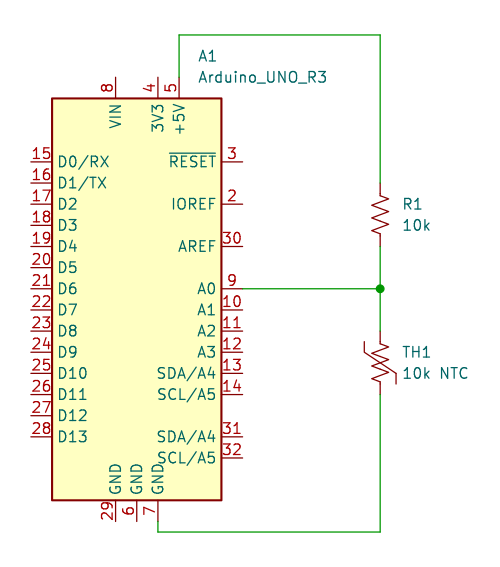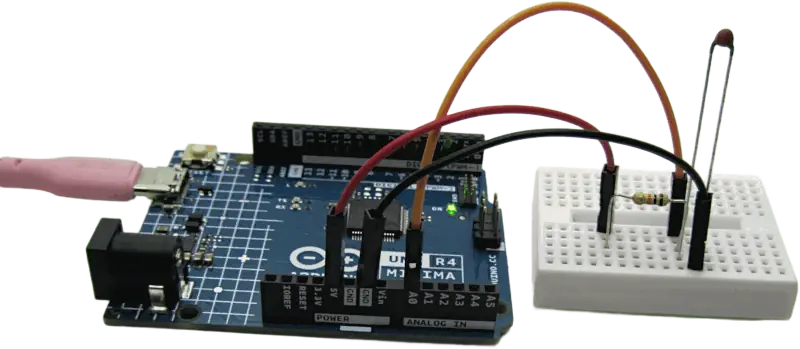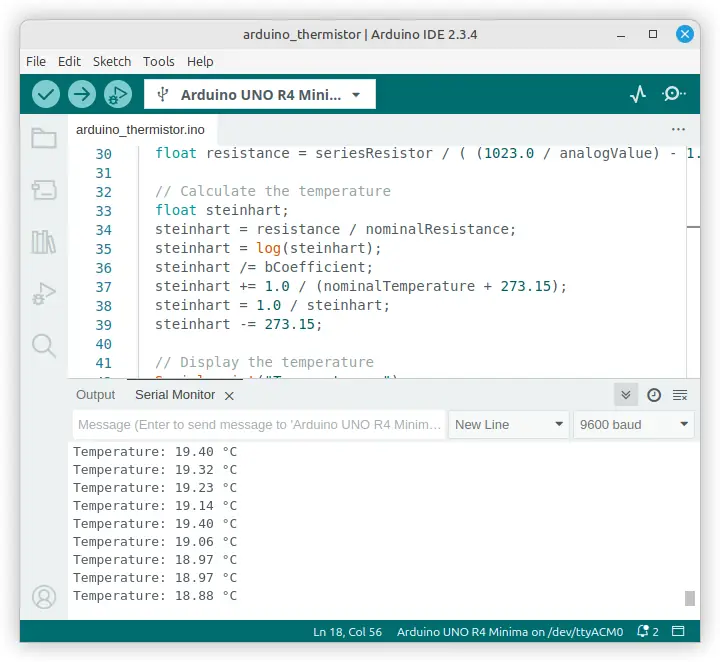How do thermistors work? Thermistors are small but powerful components used in countless electronic circuits to measure and control temperature. Whether you’re building a DIY project or exploring how your household appliances function, understanding thermistors is a key step in learning electronics.
In this guide, we break down how thermistors work, what types exist, and how you can use them in real-world applications. Let’s dive into the world of temperature-sensitive resistors.
Table of Contents
- What Is a Thermistor?
- How Do Thermistors Work?
- How Do Thermistors Work? : Types of Thermistors
- Thermistor Symbols for Circuit Diagrams
- How Do Thermistors Work? – Thermistor Manufacturers
- How Do Thermistors Work vs. Other Temperature Sensors
- How to Read Thermistor Values
- How Do Thermistors Work? – Practical Applications
- How Do Thermistors Work in Circuits?
- How Do Thermistors Work Tips
- How Do Thermistors Work? : Final Thoughts
What Is a Thermistor?
A thermistor is a type of resistor whose resistance changes with temperature. The term comes from “thermal” + “resistor”, meaning its electrical resistance varies based on the surrounding temperature.
Thermistors are widely used in temperature sensing and protection circuits due to their high sensitivity to small temperature changes.
Examples of thermistors are shown in the following images. The first image is a thermistor housed in a waterproof package with connected wires. Individual thermistor components are shown in the second image.


Part of a thermistor datasheet is shown below. This is a component from Vishay that has the part number NTCLE100E3102JB0. It is just one example of many types of available thermistors. This particular thermistor has a negative temperature coefficient (NTC). NTC means that its resistance decreases with an increase in temperature.

How Do Thermistors Work?
The core principle behind a thermistor is that its resistance changes predictably with temperature:
- When the temperature increases, the resistance either increases or decreases depending on the thermistor type.
- This property allows thermistors to act as temperature sensors, inrush current limiters, or over-temperature protection devices in electronic circuits.
But how does this actually work?
Thermistors are typically made from semiconducting ceramic materials, such as metal oxides (e.g., manganese oxide, nickel oxide, cobalt oxide, or copper oxide), that are sintered (compressed and heated) into beads, disks, or rods. These materials are chosen for their strong temperature-dependent resistance characteristics.
Why Resistance Changes with Temperature
In NTC thermistors, increasing the temperature provides more energy to the charge carriers in the material (electrons), making them more mobile. This lowers resistance, as more charge can flow. This behavior is typical of semiconductors — which is why thermistors are considered semiconductor devices, even though they are not made from silicon like most traditional semiconductors.
In contrast, PTC thermistors use materials where, above a certain temperature threshold, the material undergoes a structural change or reduced mobility of charge carriers, causing resistance to rise sharply.
Are All Thermistors Made from the Same Material?
Not all thermistors use the same metal oxide combinations. The exact formulation and manufacturing process determine:
- The temperature range the thermistor operates in
- Its response curve (how sharply resistance changes with temperature)
- Stability and tolerance
- Whether it behaves as an NTC or PTC device
Different applications — such as medical devices, automotive sensors, or industrial equipment — may require thermistors with different compositions and characteristics.
How Do Thermistors Work? : Types of Thermistors
Thermistors come in two main types based on how their resistance changes with temperature:
1. NTC Thermistors (Negative Temperature Coefficient)
- Resistance decreases as temperature increases.
- Commonly used in temperature sensing applications like thermostats, battery protection, and digital thermometers.
2. PTC Thermistors (Positive Temperature Coefficient)
- Resistance increases as temperature rises.
- Often used for overcurrent protection and self-regulating heating elements.
Thermistor Symbols for Circuit Diagrams
Below are various thermistor symbols used in circuit diagrams or schematic diagrams. Both US (United States) and EU (European) variants of the symbols are shown.

At the top of the image are general thermistor symbols showing both the US and EU variants.
The symbols in the middle of the image are PTC thermistor symbols.
At the bottom of the image are US and EU symbols for NTC thermistors.
How Do Thermistors Work? – Thermistor Manufacturers
Thermistors are widely used in temperature sensing, circuit protection, and compensation applications across a range of industries. Many companies around the world manufacture thermistors, offering various types, specifications, and technologies to suit different needs.
Below is a table listing some well-known thermistor manufacturers as examples. This is not a complete list, and there are many other manufacturers that also produce reliable and high-quality thermistors.
| Manufacturer | Website |
|---|---|
| Amphenol | https://www.amphenol.com/ |
| Molex | https://www.molex.com/en-us/home |
| Murata | https://www.murata.com/ |
| TDK | https://www.tdk.com/en/index.html |
| TE Connectivity | https://www.te.com/en/home.html |
| Vishay | https://www.vishay.com/ |
How Do Thermistors Work vs. Other Temperature Sensors
You might wonder: how is a thermistor different from other temperature sensors like RTDs or thermocouples?
| Sensor Type | Accuracy | Cost | Response Time | Use Case |
|---|---|---|---|---|
| Thermistor | Good | Low | Fast | General-purpose, low-cost sensing |
| RTD | Excellent | Medium to High | Slower | Industrial applications |
| Thermocouple | Wide Range | Low to Medium | Fast | Extreme temperatures |
Key takeaway: Thermistors are ideal for cost-effective, everyday temperature measurement needs.
How to Read Thermistor Values
Most thermistors are marked with a resistance value at 25°C, such as 10K (10,000 ohms). Their resistance change with temperature is often provided in a datasheet using a Beta value or temperature-resistance chart.
You can use the Steinhart-Hart equation or simple lookup tables to convert resistance into temperature in microcontroller projects. The best place for information on calculating temperature is in the datasheet for the particular thermistor.
How Do Thermistors Work? – Practical Applications
Thermistors are everywhere. Here are some common applications:
1. Household Appliances
Used in coffee makers, ovens, refrigerators, and hair dryers for temperature control.
2. Battery Packs
Prevent overheating in phones, laptops, and electric vehicles by monitoring battery temperature.
3. 3D Printers
Thermistors precisely regulate the temperature of the extruder and heated bed.
4. HVAC Systems
Measure air temperature for intelligent climate control in smart thermostats.
How Do Thermistors Work in Circuits?
Here’s a simple Arduino thermistor project idea for beginners:
Goal: Read temperature using a 10K NTC thermistor with an Arduino board and display it on a serial monitor.
How it works:
The thermistor is connected in a voltage divider configuration with a fixed resistor. The Arduino reads the voltage across the thermistor and calculates the temperature.
This is a great first project for understanding both resistors and analog inputs.
Light dependent resistors work on a similar principle where resistance of the LDR varies with the amount of light on the sensor. These components can also be connected to an Arduino in a similar way.
Basic Components
- 10K NTC thermistor
- 10K fixed resistor
- Arduino Uno
- Breadboard and jumper wires
Arduino Thermistor Circuit
An Arduino thermistor circuit diagram is shown below. It has the following connections:
- A0: Connected to the junction of the 10K resistor and thermistor
- 10K fixed resistor: Between A0 and 5V
- 10K NTC thermistor: Between A0 and GND

There are many different thermistors to choose from for this project. One example is the ND03N00103KCC 10kΩ Resistance, NTC Type, 3.5 x 3mm thermistor from KYOCERA AVX. It has a tolerance of ±10%. Considering the thermistor tolerance and the fixed resistor tolerance, the actual temperature will not be completely accurate. In addition bCoefficient = 3950.0 is set in the sketch that follows, which is the correct B coefficient for the ND03N00103KCC sensor. It may need to be changed for other sensors.
The image below shows the above circuit built on a breadboard and using the ND03N00103KCC thermistor. It is connected to an Arduino Uno R4 MINIMA board, but will work on other Arduino models, such as the R3 and earlier.

Arduino Thermistor Sketch
The following sketch reads the value from the thermistor / resistor voltage divider circuit above and calculates the temperature in degrees Celsius using the Steinhart-Hart equation. Continuous temperature readings are sent out of the serial USB port every second, and displayed in the Serial Monitor window of the Arduino IDE.
/*-----------------------------------------------------------------------------
arduino_thermistor.ino:
Sketch reads a thermistor value on an analog pin, calculates the temperature
and displays the resulting temperature in the Arudino IDE Serial Monitor.
A 10k pull-up resistor connects from the analog pin to +5V
A 10k NTC thermistor connects from the analog pin to GND
August 6, 2025
https://startingelectronics.com/how-do-thermistors-work/
-----------------------------------------------------------------------------*/
const int thermistorPin = A0; // Analog input pin to use
const float seriesResistor = 10000.0; // 10K fixed resistor
const float nominalResistance = 10000.0; // Thermistor resistance at 25°C
const float nominalTemperature = 25.0; // 25°C
const float bCoefficient = 3950.0; // Beta value
void setup() {
// Initialize serial USB connection for sending temperature
Serial.begin(9600);
}
void loop() {
// Read the value from the analog pin
int analogValue = analogRead(thermistorPin);
// Resistance formula for thermistor between analog pin and GND
float resistance = seriesResistor / ( (1023.0 / analogValue) - 1.0 );
// Calculate the temperature
float steinhart;
steinhart = resistance / nominalResistance;
steinhart = log(steinhart);
steinhart /= bCoefficient;
steinhart += 1.0 / (nominalTemperature + 273.15);
steinhart = 1.0 / steinhart;
steinhart -= 273.15;
// Display the temperature
Serial.print("Temperature: ");
Serial.print(steinhart);
Serial.println(" °C");
// Delay to display the temperature once a second
delay(1000);
}
Arduino Thermistor Sketch Output
Temperature readings from the Arduino thermistor sketch above are shown in the Arduino IDE Serial Monitor in the image below.

How Do Thermistors Work Tips
- Use pull-down or pull-up resistors for voltage divider circuits.
- Check the datasheet for the correct Beta value or resistance chart.
- Avoid high currents, as thermistors can self-heat and affect measurements.
How Do Thermistors Work? : Final Thoughts
Thermistors are essential components for anyone diving into electronics. Their simplicity, affordability, and reliability make them perfect for sensing temperature in all kinds of projects. Whether you’re just getting started or building a smart device, understanding how thermistors work opens up a world of possibilities.
See the related article How Does a Resistor Work? Resistance the Easy Way.
